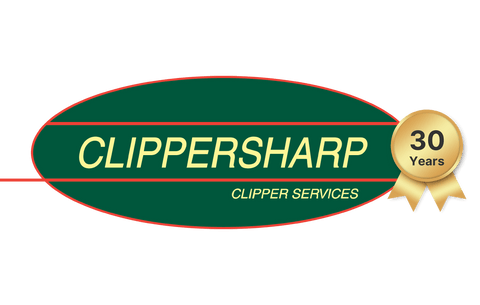Here are a few key suggestions to help you survive the hairy times.
- Check out all your clipping kit and ensure it has been regularly serviced and the blades have been sharpened and are ready to go. It will pay to have at least two sets of the same grade blades, just in case one set goes blunt mid clip.
- Check the cable, if it has one, and make sure there are no cracks or cable breaks that could give you or your horse an electric shock.
- Attach a circuit breaker to all mains clippers.
- Turn the clipper on and run it for a few minutes to make sure it is working before going out to do your first clip.
- Keep your blades in dedicated air-tight storage boxes. This stops them from rusting but also means they can be labelled with the grade/type of blade which makes them more identifiable if you have a selection.
- If your clipper has a tension set, check that you have all components, this usually includes, the nut, spring and bolt. If you have left the tension set done up tightly on the clipper since last season, then think about replacing, as the spring may well have distorted which will cause the tensioning to be inaccurate and in turn the blades won’t cut as well.
- Ensure you have adequate clipper oil to hand (not WD40, cooking oil or anything else that isn’t clipping oil!). You can never over oil, and more oil is better than less. This will keep blades moving well, less heat generated and no additional stress caused to the motor.
- If you haven’t used blade wash, then consider adding this to your clipping kit, this will clean and remove grease quickly and easily and ensure blades are then stored away clean and ready for their next use.
- Clipper brushes do generally come with clippers, but if not, a small brush or toothbrush is handy for cleaning between the teeth and under the head to get out excess hair. For brushing off excess hair whilst clipping then a really flicky grooming brush is a must, and will ensure you can see any areas that may have been missed!
- Invest in some hair resistant clothing. There are a few clipper overalls on the market that claim to be hair resistant, but otherwise a lightweight shower proof jacket and trousers are a good alternative and we find are a more flexible option.
- Sturdy boots or shoes that will keep your feet safe from jumpy horses are also a good choice, as well as a hard hat to cover all eventualities.
- Ensure you choose a dry area with a flat, non-slip surface and with adequate lighting. Alternatively keep a head torch handy if the lighting is poor. This is handy also for clipping under the belly when lighting is limited.
- If you have the opportunity of introducing clippers/trimmers to a new or young horse that you haven’t clipped before, this will be hugely beneficial, especially if time has been taken to do this prior to the animal requiring a clip.
- Have a helper handy if you know the horse may be fidgety or you are new to clipping as well as keeping a haynet available when the head and neck area are not being clipped.
- Choose a suitable time to clip and avoid turnout and feed times. Allow enough time, it may take you longer than you think.
- Keep a step or sturdy box handy to make it easier to reach the higher areas.
- Before clipping ensure the horse is clean, dry and mud free. If you can bath the horse all the better, but if the weather doesn’t allow, then use the hot cloth method, dipping a cloth into a solution of hot water mixed with a mild solution of shampoo or a dedicated hot clothing solution. To allow extra slide, spray the coat with a coat conditioning spray prior to starting to clip.
- After clipping, remove excess grease and hair by again using the hot clothing method. Towel dry to finish and rug up well.
